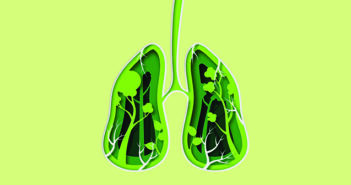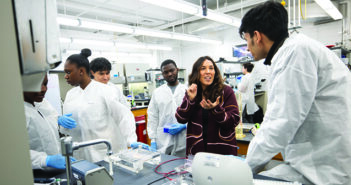Research identifies a new target to treat wasting conditions.
Scientists have long studied the neuromuscular junction, or NMJ, which bridges nerves to muscle fibers. This bridge carries signals that cause muscle contractions, making it a linchpin for movement—and the loss of it.
Now, after decades of NMJ research, a team led by scientists at Brown’s Carney Institute for Brain Science and Division of Biology and Medicine have uncovered surprising new insights about how it’s built and how it works. They published the study in the Journal of Neuroscience.
“This was a complete surprise,” says Lauren Fish PhD’22, a University of Michigan postdoctoral research fellow and first author on the new paper, who made the discovery as a graduate student at Brown. “Our finding really recasts how we, as researchers, think about the neuromuscular junction and the movement it makes possible.”
Fish and her coauthors found a second, wholly distinct role for muscle-specific kinase, or MuSK, a protein found at the NMJ: MuSK assembles sodium channels, which amplify muscle contraction signals from the neurotransmitter acetylcholine. They made the discovery when they removed a critical piece of the protein in mice and disrupted the amplifier, which weakened the contractions.
Senior author Justin Fallon, PhD, a professor of medical science and of psychiatry and human behavior, has spent years studying the NMJ and its essential role in transmitting electrical impulses from the nervous system to the muscles so the body can breathe, swallow, and perform voluntary movements like lifting and walking. He says researchers have long known that MuSK gathers and assembles acetylcholine receptors, which help the body pick up the contraction signals.
What’s new, after two generations of study, is that MuSK also assembles sodium channels, which amplify those signals.
“This means we have a new target for drugs to treat conditions where you see muscle weakness or wasting, like spinal muscular atrophy, amyotrophic lateral sclerosis, even Duchenne muscular dystrophy,” Fallon says.
Fish also notes the potential implications for sarcopenia, the gradual loss of muscle mass, strength, and function that occurs with aging. According to the NIH, people lose about half of their muscle mass by the time they’re 80 years old. This can make everyday activities like getting out of a chair difficult and increase the likelihood of falls.
Fish and Fallon are working with international collaborators to take their findings to the next level, work they hope will provide evidence of a direct connection between sodium channels and sarcopenia.




